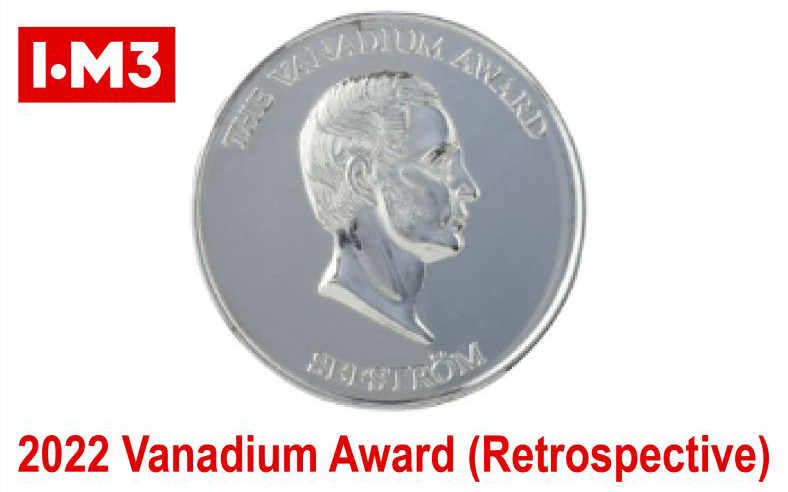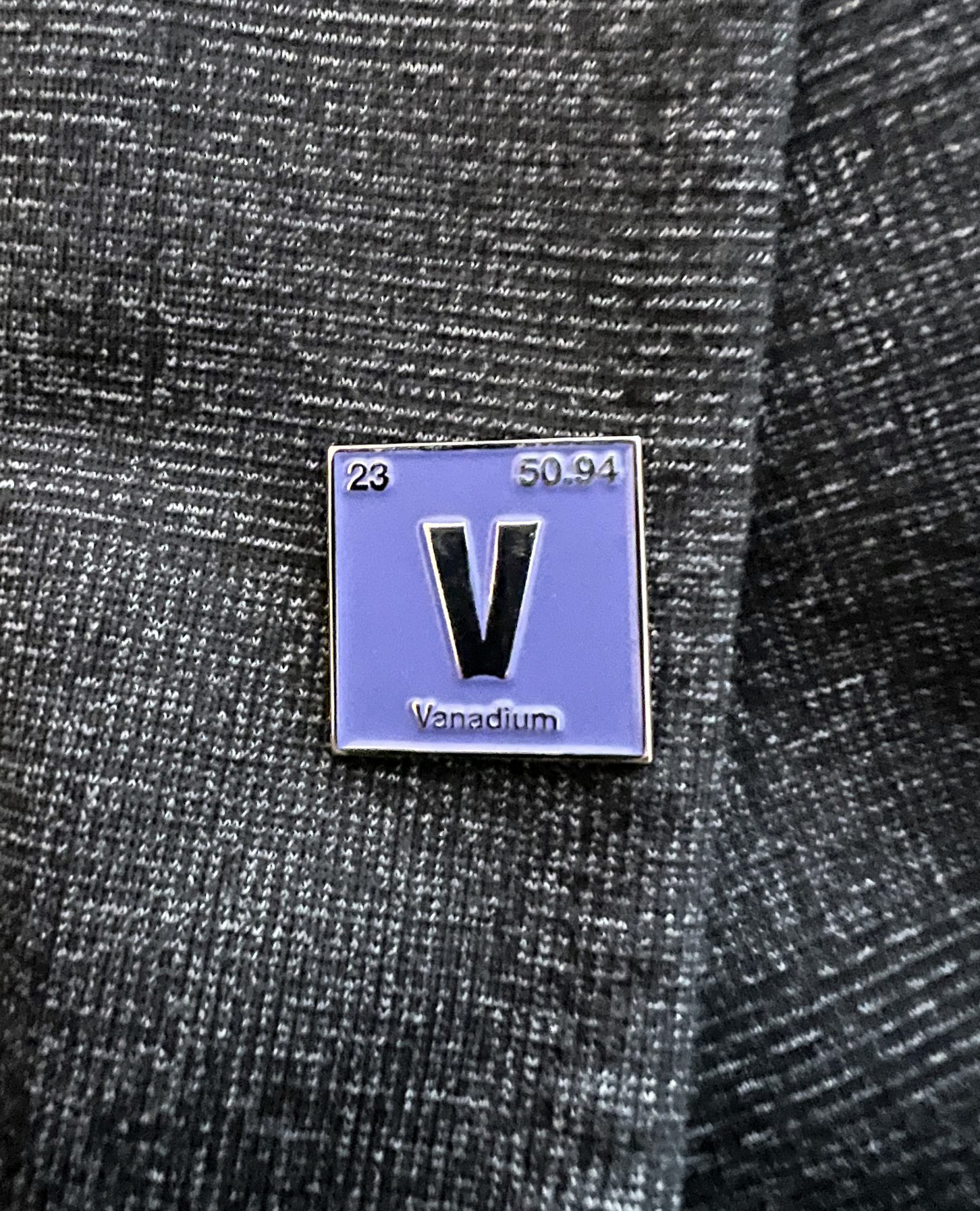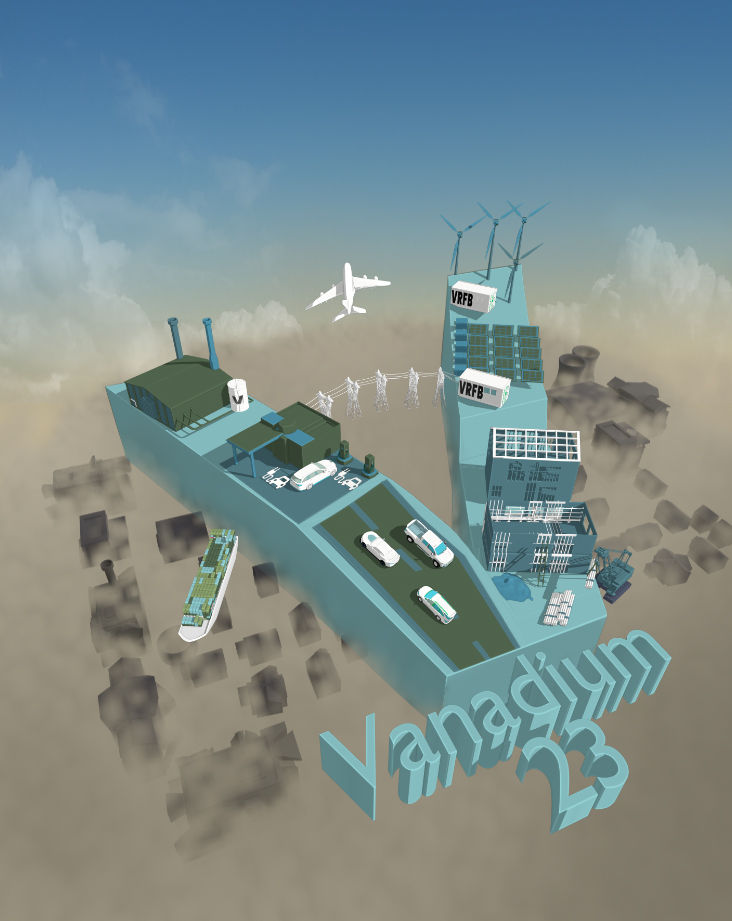
An interdisciplinary team of Texas A&M University scientists has been honored with the Institute of Materials, Minerals and Mining’s (IOM3) 2022 Vanadium Award recognizing the year’s most outstanding paper describing innovative research related to the metallurgy and technology of the game-changing element vanadium and its alloys.
The paper, published in the Cell Press journal iScience, details results from a cross-college collaboration involving faculty and students from the College of Arts and Sciences and the School of Architecture who were investigating the rich interconnectedness of resource criticality and the interesting tension between materials needed for the energy transition and innovations urgently required in hard-to-abate sectors.
Through a combination of solid-state and materials chemistry analyses and energy and building-information modeling, the team determined that vanadium can contribute to the production of lighter, stronger and more durable steels while also reducing the environmental impacts and overall carbon footprint of steel manufacturing. Their extensive study examines the carbon and energy impact of a single critical element, vanadium, across different industries, including construction, long-duration energy storage with redox flow batteries and vehicle lightweighting.

“This is the highest award for publications that have anything to do with vanadium, our very favorite element and muse, so we are super excited,” said Texas A&M chemist Dr. Sarbajit Banerjee, whose Department of Chemistry-based research group has been working for the past several years with that of Dr. Manish Dixit’s in the Department of Construction Science to explore the vanadium-related possibilities with respect to steel production and safe energy storage, among other frontiers. “This is also the first time that IOM3 has gone beyond traditional materials science and metallurgy journals. We are delighted to be chosen and beyond grateful to our research sponsor Vanitec and to the vanadium community for their support.”
Each year, IOM3 presents a range of awards, medals and prizes to recognize personal achievement, published work and contributions to the institute, knowledge, outreach and profession. The Texas A&M team along with their fellow recipients will be formally recognized at the 2023 IOM3 Awards Day, set for December 7 in London.
Banerjee and Dixit were co-authors on the research, which was led by their respective graduate students — 2022 Texas A&M chemistry Ph.D. graduate Dr. David A. Santos '19, now a senior research specialist with Dow, and 2022 Texas A&M civil engineering Ph.D. graduate Dr. Pranav Pradeep Kumar '22, a current research associate with the Texas A&M Transportation Institute.

“The Vanadium Award holds a special significance for us, as it highlights the importance of quantifying the role of metals in enabling technologies that drive the decarbonization of industries,” Santos said in a recent LinkedIn post celebrating the honor. “This recognition is a significant milestone not just for the team, but also for the industry. I would like to express my deepest gratitude to our entire team, to Vanitec for supporting this work and to Cell Press for believing in the vision.”
The team's paper, "Assessing the role of vanadium technologies in decarbonizing hard-to-abate sectors and enabling the energy transition," can be viewed online along with related figures and acknowledgements. Their work, which built on earlier results made possible through seed funding from the Texas A&M X-Grants Program, was supported in part by Vanitec. Santos, who served as lead author for the paper, was funded through a National Science Foundation Graduate Research Fellowship (Grant No. 1746932).
“Vanadium has proven itself time and again as a critical mineral in the energy transition supporting decarbonized global energy supply and construction,” said John Hilbert, CEO of Vanitec. “The cutting-edge research undertaken by Texas A&M University Is testament to this. Thanks to the efforts of research institutions, Vanitec’s members companies and the greater vanadium community, the strategic importance of vanadium is increasingly being recognized around the world. Congratulations to Professor Banerjee and his team on this well-deserved accomplishment.”
iScience is the interdisciplinary journal from Cell Press publishing across life, physical, earth and health sciences. Now in its fifth year, iScience has become a destination for advances that push the boundaries of interdisciplinary and pave the way for impactful research.
Learn more about this work and other projects within the Banerjee Research Group or about IOM3.
